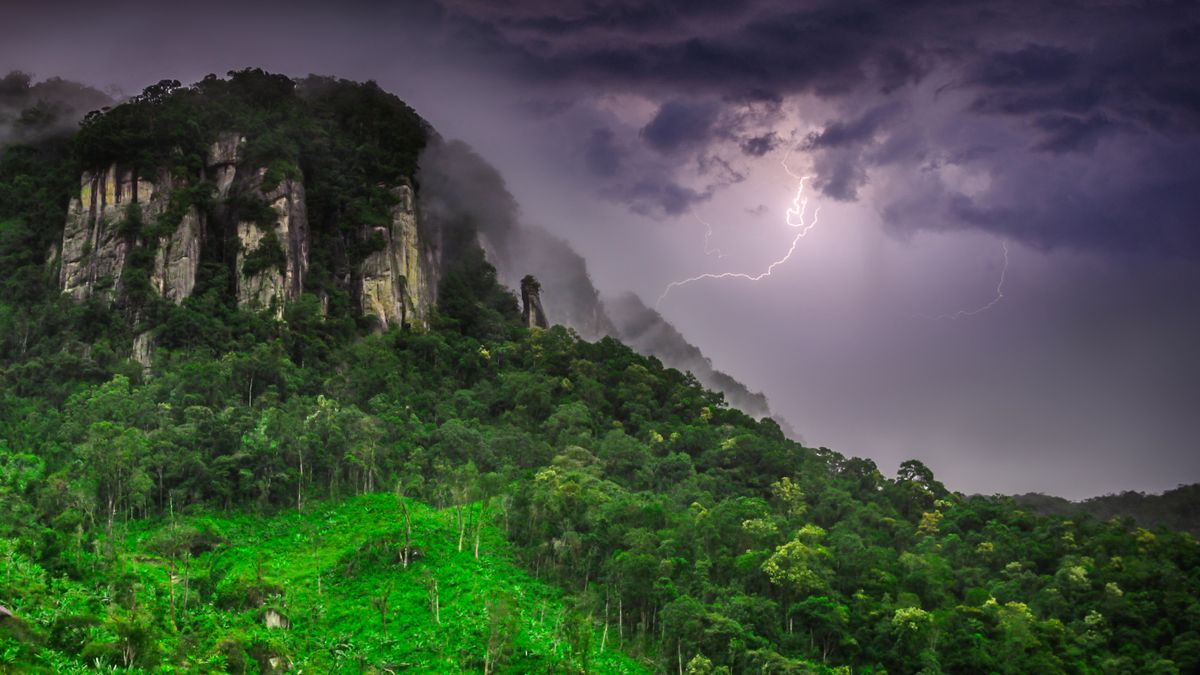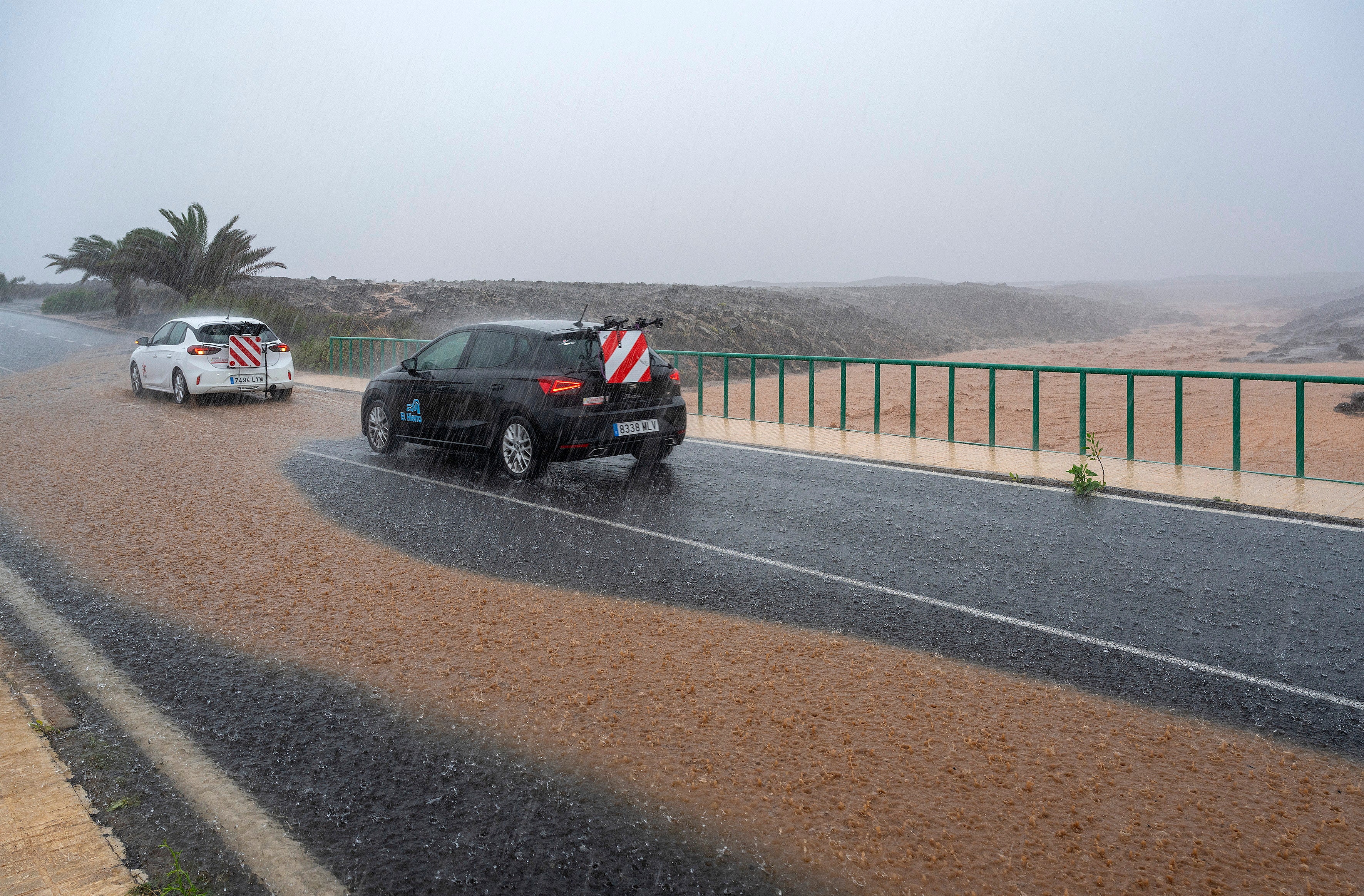Tonka Bean Tree: A Lightning Rod for Success in Panama’s Rainforest
By Archyde News Journalist
October 26,2024
In the lush lowland rainforests of Panama,a towering tree species,the tonka bean (Dipteryx oleifera),appears to have not only adapted to survive lightning strikes but thrives because of them. This revelation challenges conventional understanding of lightning’s impact on forests, offering new insights into ecological resilience and species adaptation.
The Tonka Bean’s Shocking Secret
While lightning is often viewed as a destructive force in forests, capable of felling even the mightiest trees, a recent study published in the journal New Phytologist reveals that the tonka bean tree may actually benefit from these electrical encounters. The research, conducted in Panama’s Barro Colorado Nature Monument, indicates that Dipteryx oleifera not only survives lightning strikes but also uses them to eliminate competitors and parasitic vines.
“We started doing this work 10 years ago, and it became really apparent that lightning kills a lot of trees, especially a lot of very big trees,”
Evan Gora, a forest ecologist at the Cary Institute of Ecosystem Studies
gora further noted, “But Dipteryx oleifera consistently showed no damage.” this resilience sets the tonka bean apart in an surroundings where lightning is a major cause of tree mortality, especially among older trees crucial for carbon storage and biodiversity.
tracking Lightning with High-Tech Precision
To understand the precise impact of lightning on the forest, the scientists developed a sophisticated detection system. This system, comprised of an antenna array strategically placed throughout Central Panama, detects radio waves emitted by lightning strikes.By analyzing the energy patterns recorded by each sensor, the researchers can pinpoint the exact location of the strike with remarkable accuracy.
this data, combined with on-the-ground surveys and drone imagery, enabled the team to monitor the condition of trees in the affected area over time. This extensive approach allowed them to observe the long-term effects of lightning strikes on the tonka bean trees and their neighbors.
(Image credit: Evan Gora)
A Competitive Edge: Lightning as a Selective Force
The data revealed a striking trend: D.oleifera consistently exhibited minimal damage after lightning strikes. Analysis of decades-long tree plot records further highlighted the risks associated with proximity to tonka bean trees.
“Over those 40 years, there’s a quantifiable, detectable hazard of living next to Dipteryx oleifera. [As a tree], you are substantially more likely to die than living next to any other big old large tree in that forest,”
Gora
On average, each lightning strike was found to eliminate over 2.4 tons (2 metric tons) of nearby tree biomass and nearly 80% of the parasitic vines (lianas) infesting the tonka bean’s canopy. This clearing effect provides the tonka bean tree with a significant competitive advantage, allowing it to thrive in the aftermath.
The Science Behind the Survival
The tonka bean tree’s resilience to lightning remains a topic of ongoing research. Gora speculates that the tree’s physical structure plays a key role. Previous studies suggest that the tonka bean possesses high internal conductivity,enabling lightning current to flow through it without generating damaging heat – much like a well-insulated wire. This efficient conduction may prevent the tree from exploding or suffering severe tissue damage during a strike.
Moreover, the tonka bean’s notable size, reaching heights of up to 130 feet (40 meters), and its long lifespan, spanning centuries, make it a frequent target for lightning. Each strike helps to clear out surrounding vegetation, opening up the canopy and giving the tree a greater opportunity to flourish. Researchers estimate that a lightning strike could increase the tree’s lifetime seed production by a factor of 14, providing a major reproductive advantage.
Broader Implications and Future Research
The findings of this study have broader implications for understanding forest dynamics and the role of lightning in shaping ecosystems. While the research focused on the tonka bean tree in Panama, the principles may apply to other species and environments worldwide.
“The sort of work could also apply to other tree-dominated plant communities such as woodlands or low woodlands where trees are widely separated, so nothing like a tropical forest,”
Gregory Moore, a horticulturalist from the University of Melbourne
Moore added that other tall trees in various environments are also likely targets of lightning strikes. He noted that some trees in Australia survive bushfires, towering over their neighbors, making them prime targets for lightning which, he says, “are frequently enough referred to as stags as the top of the crown has been blown out, but they can survive for centuries after being hit by lightning.”
Gora and his team are now expanding their research to forests in Africa and Southeast Asia to investigate whether lightning provides similar benefits to other tree species in different ecosystems. This ongoing research promises to further illuminate the intricate relationships between trees, lightning, and the environment.
Lightning Strikes and Forest Ecology: Key Takeaways
| Key Factor | Impact | Relevance to US Ecosystems |
|---|---|---|
| Lightning Strikes | Selective force, reduces competition | Similar dynamics in Southeastern pine forests, promoting fire-resistant species like Longleaf Pine. |
| Tree Conductivity | Resistance to damage | Understanding conductivity could help identify and protect valuable trees in National Parks and Forests. |
| Seed Production | Increased reproductive success | managing forests for biodiversity and resilience might include strategies that mimic lightning’s effects. |
These findings suggest that understanding the role of lightning could inform forest management practices, particularly in regions prone to frequent storms or wildfires. Such as, in the southeastern United States, where lightning-ignited wildfires are common, promoting fire-resistant species like the Longleaf Pine could enhance forest resilience.







